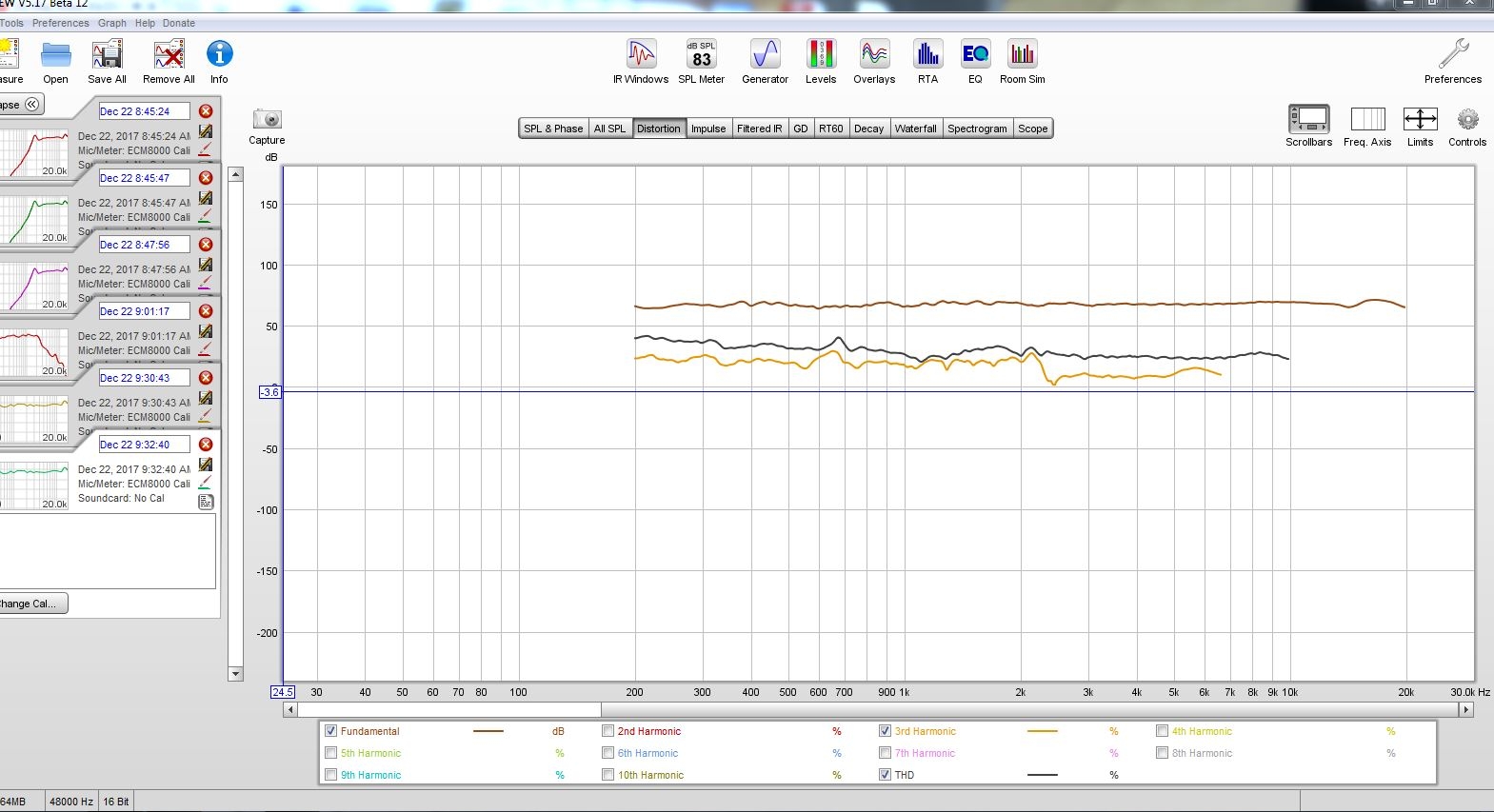Site Links
Howdy, Stranger!
It looks like you're new here. If you want to get involved, click one of these buttons!
Quick Links
Categories
In this Discussion
Who's Online (6)
- Ed_Perkins 2:59PM
- Jakes_dad 2:59PM
- kenrhodes 2:59PM
- rjj45 2:59PM
- technodanvan 2:59PM
- Tom_S 2:59PM
Please review the site Rules, Terms of Service, and Privacy Policy at your convenience. Rules, TOS, Privacy
Get familiar with the reaction system: Introducing the Reaction System
Distortion measurements
Whats good and whats bad when it comes to distortion measurements ,visually when looking at the graph?
How do you guys do it ? I saw Craigs post earlier on the SB ceramic divers that he recently purchased . So crank that shit up and let it go nuts , or... how do you guys do it ?

How do you guys do it ? I saw Craigs post earlier on the SB ceramic divers that he recently purchased . So crank that shit up and let it go nuts , or... how do you guys do it ?


Comments
I usually test at 2 different levels. The biggest thing is you have to make some kind of standard for yourself so that your measurements are comparable. So you need to test at the same levels (output or voltage - I use output) and distance every time or you are just getting a bunch of random information that you can't compare.
InDIYana Event Website
On finished systems I generally target 90db at 1M, which is loud enough to let you know if the woofer is going to dump on you below tuning - they generally do.
My measurements are generally useful to me primarily, since I do not follow any real established "method'. I set level at the distance I plan on measuring using my SPL meter and pink noise. Then I let her rip with a 128K sine wave. I like to torture during distortion testing.
The things I look for are: odd peaks here and there. They can indicate suspension/cabinet issues. Where the woofer starts shooting up in the 3rd harmonic, ditto for the tweeter.
One thing I look for in a design is a clean transfer from driver to driver on distortion levels. Not to pick on Ben, but his first iteration of the Cecropia shows a significant cliff in distortion at the hand-off from woofer to tweeter. The second iteration shows a markedly better hand-off. Those cliffs are due to bread-and-butter motors on woofers being mated to much nicer tweeters. That being said, the first version is not exactly a DS-175 level of shitty (it is fairly respectable, to be honest) - so don't read too far into my comments about "bread-and-butter" motors. Just pointing out one of those little "secrets" about "synergy".
Another thing to do is to keep cranking the sweeps in 2db increments and overlay. You have to subtract 2db off each subsequent sweep to get a good overlay. It can tell you how loud you can play before compression kicks in. My experience has been that the typical woofer starts taking a shit by jumping the gap long before compression is an issue, so IMHO, the value of compression testing is of concern only if you have already taken steps to protect the woofer from being the weak spot. so throw a high pass on it to protect the woofer, and have fun with ear plugs trying to see where the tweeter starts failing. It is usually way louder than you would ever listen to - again, IMHO, making the value of compression testing somewhat marginal since the majority of us are not designing towards outdoor rock show levels. Additionally, if you perform distortion testing loud enough with a long enough sweep - non-linearities due to compression will probably show up anyways.
Basically, crank it up and be prepared for losing a driver or two as you learn it. Yes, also put things in a little higher resolution. I use 5db in ARTA, and try to minimize the min/max db as well. Avoid the "oh my god my speaker is so smooth and flat" default display settings of Omnimic if you can.
InDIYana Event Website
One of those hidden costs of DIY, actually, is the chance of letting the smoke out of a driver or two. The people who ride the wave of kits/established designs benefit greatly from people who are willing to spend the time and money, running the risk of blowing an expensive driver while rooting around for the truth.
Keep in mind that 90dB into most tweeters is still 1W or less, and you are playing them for only a few seconds at a time. It will probably push the suspension to the limit, but I think its very unlikely to burn the coil over that duration.
... but that's the way to do it? I've been taking it too easy on them.
I'm really enjoying the different methods.